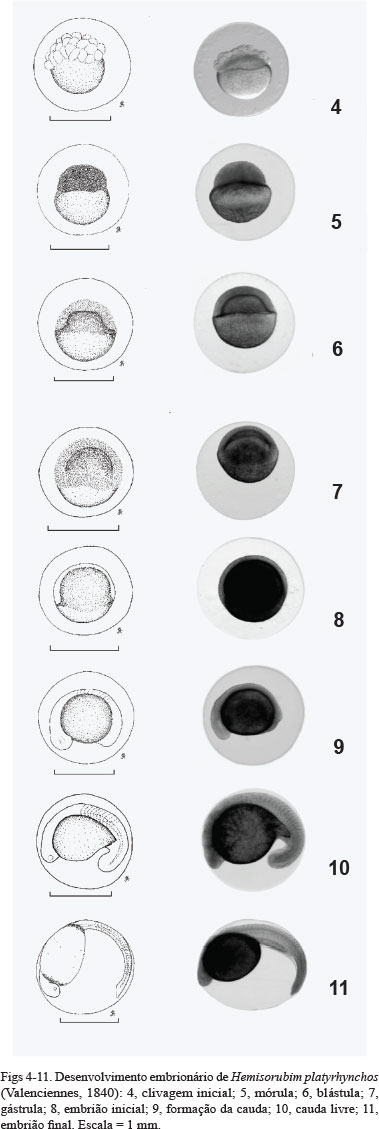This study aimed to describe the initial stages of development of the Pothole Shovelnose Catfish, Hemisorubim platyrhynchos (Valenciennes, 1840), as well as changes in the allometric growth pattern during early ontogeny. A total of 90 eggs 210 larvae, and 24 juveniles from hatching were analyzed for morphometric and meristic variables, and for besides the allometric growth coefficient in relation to head, trunk, and tail during larval and initial juvenile period. The eggs presented 1.74 mm of mean diameter; ample vitelline space (21.29%) with mean of 0.37 mm; and the average diameter of the yolk was 1.08 mm. The standard length (SL) of the larvae ranged from 3.47 to 11.85 mm, with most measurements a presenting proportional increase throughout development. The total number of myomeres ranged from 40 to 46 (pre-anal=15-17 and post-anal=24-30). The early larvae of H. platyrhynchos present pigmentation in the head and in the anteroventral region of the body (anterior and posterior regions of the yolk sac). The pigmentation intensifies in the post-flexion stage along the dorsal region of the head, forming a longitudinal strip extending from the snout to the operculum, as a transversal strip that goes from one side to the other, passing through the anterior region of the dorsal fin, with maculae distributed throughout the body in juveniles (SL=19.5-49.09 mm). In the early stages of larval development, the head and tail grow much faster than the trunk, indicating priorities related to food and swimming, which tend to isometry, with fast growth of the trunk in early juveniles.
Early development; morphometry; allometric growth; fish larvae














